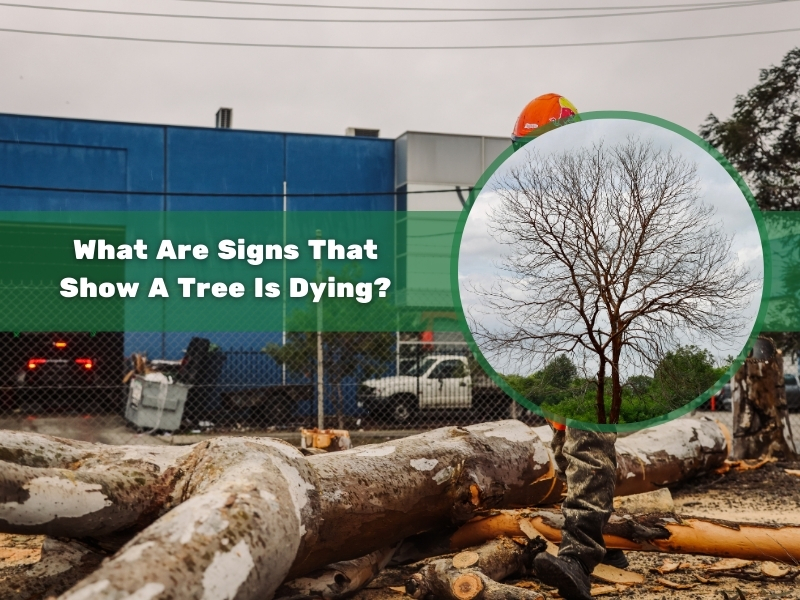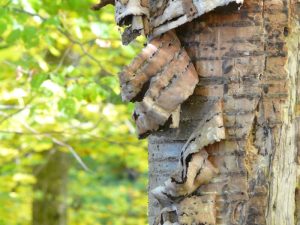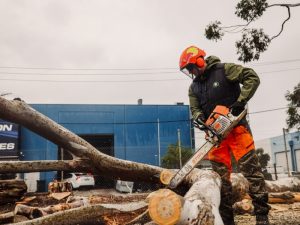Trees are integral parts of any landscape, providing beauty, shade, and environmental benefits. However, over time, trees can succumb to disease, pests, or environmental stress, leading to their decline. Identifying the signs that a tree is dying can prevent hazards, protect your property, and help maintain the health of your landscape. This article covers the key indicators of a dying tree and why it’s essential to address the issue early.
How can you identify a dying tree by its leaves?
The leaves of a tree can tell you a lot about its health. A sudden change in leaf colour, texture, or appearance can indicate distress.
- Yellow or brown leaves: While leaves may naturally yellow in autumn, if this occurs in the middle of the growing season, it may suggest nutrient deficiencies or disease.
- Wilting or drooping leaves: If the leaves are wilting even when there’s enough water, it could be a sign of root rot or internal damage.
- No new growth: Trees that fail to produce new leaves during the growing season may be struggling with environmental or pest-related issues.
- Leaf spotting: Dark spots or patches on leaves could indicate a fungal infection or pest infestation.
What role do dead branches play in identifying a dying tree?
Dead branches are a clear indication that a tree is in distress.
- Breakage or falling branches: A tree with weak, brittle branches is at risk of causing damage to your property or surrounding structures.
- Lack of budding: If branches are not budding or leafing out, they may be dead and should be removed.
- Dry, brittle branches: Healthy trees have flexible, moist branches. Dead branches tend to snap quickly and have a dry, brittle texture.
- Decay or fungus: Decaying branches often show signs of fungal growth, which can indicate an internal issue.
Why are cracks and splits in the trunk a sign of tree distress?
Trees play a crucial role in carbon sequestration, absorbing carbon dioxide from the atmosphere and storing it in their biomass. Cracks and splits in a tree’s trunk can signal that it is under significant stress.
- Structural damage: Cracks can weaken the tree’s structure, making it more prone to falling in storms or high winds.
- Disease entry points: Cracks in the bark can be entry points for pests and diseases, further compromising the tree’s health.
- Sunscald: Sudden changes in temperature, especially in winter, can cause cracks in the trunk. While this is sometimes natural, it can also stress the tree.
- Wood decay: Visible splits can allow moisture to accumulate in the trunk, leading to rot and internal decay.
How does peeling bark signal that a tree might be dying?
Peeling or flaking bark is another distress signal that should not be ignored.
- Inconsistent bark shedding: Trees naturally shed bark, but if large sections of bark peel off suddenly, it could indicate that the tree is struggling with disease or pests.
- Gaps in bark: When the bark is missing or loose, the inner layers of the tree are exposed, increasing the risk of infection or pest damage.
- Discolouration: If the bark is discoloured or shows signs of fungal growth, the tree might be infected or decaying.
What does the presence of pests and fungi tell you about a tree’s condition?
The presence of pests or fungi is often a tell-tale sign that a tree is unhealthy.
- Insect infestation: Pests like termites, ants, or beetles can weaken a tree by feeding on its leaves, bark, or wood. If you notice an increase in pests, it’s a sign of internal decay.
- Fungal growth: Fungus growing on or around the tree is a red flag. Fungi, like mushrooms or conks, can indicate that the tree is rotting from the inside.
- Discolouration or sap: If you see unusual discolouration in the tree’s bark or oozing sap, it could suggest a fungal infection or an insect problem.
How does reduced growth indicate a tree is struggling?
If a tree’s growth slows down or stops altogether, it’s often a sign that it’s not receiving the nutrients it needs to thrive.
- Shortened growth periods: Trees that aren’t producing new shoots or leaves during the growing season may be struggling with root damage or poor soil health.
- Small or deformed leaves: If the leaves are smaller than usual or distorted, it could be a sign of stress from pests, disease, or nutrient deficiencies.
- Yellowing leaves: As mentioned earlier, yellow leaves that aren’t caused by seasonal changes often point to a lack of nutrients or poor root health.
Suppose you notice a reduction in the growth of your tree. In that case, it’s a good idea to have it assessed by a professional to determine the underlying cause. Additionally, levelling your yard after tree removal is essential for restoring its appearance and functionality.
Why is it important to seek professional help for dead or dying trees?
If you suspect that your tree is dying, it’s essential to seek professional help.
- Expertise: Arborists have the knowledge and tools to assess and diagnose tree health properly, providing you with the best course of action.
- Safety: Dead or dying trees can be dangerous, especially when they’re near buildings, power lines, or walkways. A professional can safely remove the tree without causing damage.
- Health of your landscape: A dying tree can affect the health of other nearby plants, so it’s essential to address the issue before it spreads.
- Compliance: In Melbourne, tree removal requires a permit. A professional tree removal service will help you navigate the council’s requirements.
For the safety of your property and the health of your landscape, always consult a qualified arborist when you notice signs of a dying tree.
When should you consider professional tree removal?
If a tree shows signs of being beyond saving, it’s time to consider professional tree removal.
- A tree is dead or severely damaged: If the tree is completely dead or has sustained severe damage that cannot be fixed, dead tree removal services are often the best option.
- Safety concerns: If the tree poses a risk to structures, power lines, or people, it should be removed immediately.
- Irreversible disease or pest infestation: If the tree is infected with a disease or pest infestation that can’t be treated, removal will prevent it from spreading to other trees.
- Poor location: Sometimes, a tree may be in an unsuitable location, too close to buildings or infrastructure, and needs to be removed to avoid future issues.
Need help with dead tree removal?
If you’re noticing signs of a dying tree on your property, don’t wait until it becomes a safety risk. At The Yard, we specialise in dead tree removal throughout Melbourne. Our team of qualified arborists can safely assess and remove any dead or dying trees, ensuring your property remains safe and beautiful. We also offer stump grinding, tree pruning, and emergency tree services. We also offer tree removal services in Mordialloc for hazardous, unwanted, or overgrown trees. Our services include stump grinding, tree pruning, and emergency tree services to keep your outdoor space well-maintained and secure.
Call The Yard today for professional tree removal. We’re here to help!




